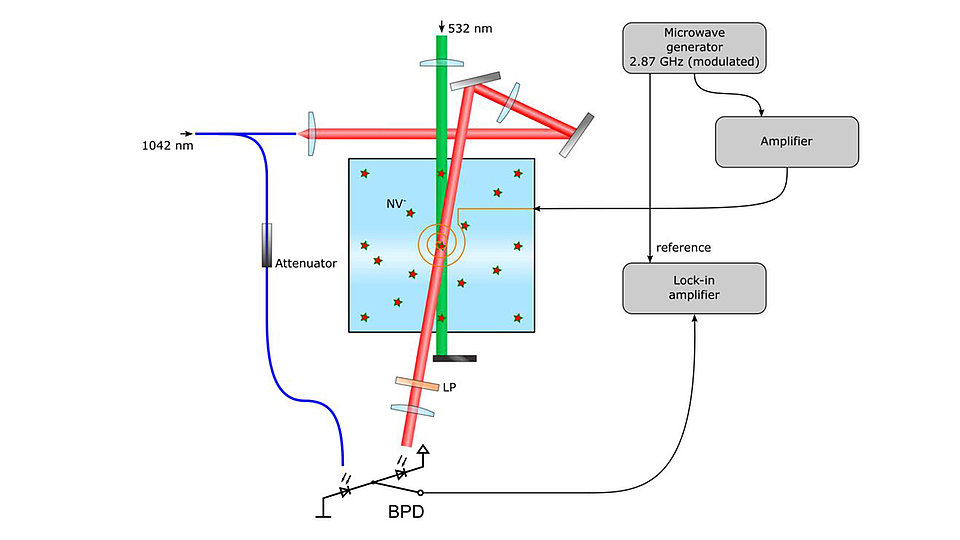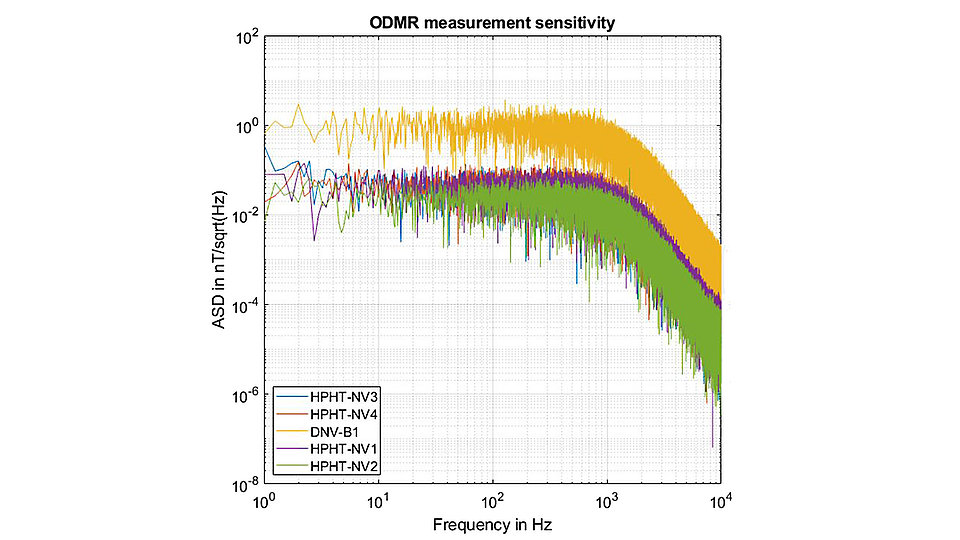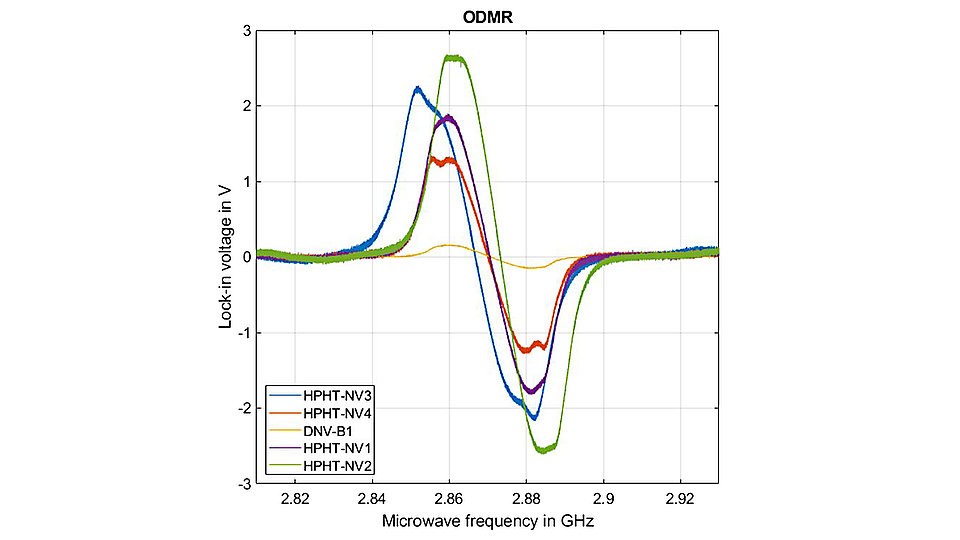High sensitivity magnetometry with ensembles of atomic defects in diamond
Fig. 1. Experimental setup. A diamond containing NV centers (red stars) is crossed by green and infrared laser beams, while a coil provides a microwave field. The intensity of the infrared laser is measured after traversing the diamond.
Fig. 2. Infrared optically detected magnetic resonance of four enhanced diamonds compared with a commercial, sensing-optimised diamond (yellow line).
The sensing of weak magnetic fields is a requirement in several applications. In biomedicine, for example, very sensible magnetometers are used to detect minuscule currents in the brain, heart, and muscles. The results of these measurements provide significant information to physicians that aids in the diagnosis and research of several illnesses. The main characteristic of such magnetometers is the capacity to reach sensitivities on the order of pT/√Hz, which is possible only with current state-of-the-art technologies. The Joint Lab Diamond Nanophotonics at FBH is developing a sensor that is capable of the required sensitivity, a diamond magnetometer.
We have succeeded in proving the concept of optical detection of magnetic resonance through the infrared absorption (IR-ODMR) of the Nitrogen-Vacancy center in diamond (NV center). The NV center is a point defect in the lattice of the diamond which is sensitive to magnetic fields and can be read out optically.
The method is based on excitations of NV centers in a 1 x 1 x 1 mm3 diamond sample using a green laser (532 nm) while a microwave field is applied in parallel (Fig. 1). The microwave antenna design was developed together with FBH’s Microwave Department. By sweeping the microwave frequency around the vicinity of the zero-field splitting of the ground state of the NV centers, their spectral response can be probed. At resonance, the absorption of an infrared laser beam at 1042 nm, which was developed in the Optoelectronics Department at FBH, is maximal, and the detected laser intensity at the output of the diamond is minimal. This effect is visible in Fig. 2 where the derivative of the signal is shown. In the data, the lock-in signal at maximum slope (at 2.87 GHz) corresponds to the minimum transmission. The Zeeman effect produced by an external magnetic field shifts the resonant peak of the NV centers proportionally to the strength of the magnetic field, hence shifting the spectral position of the lock-in signal. Taking advantage of these properties, the NV center is used as a transducer that converts a magnetic signal into an optical signal. To mitigate laser and environmental noise, a balanced optical detection and lock-in amplification are applied.
The concentration of NV centers in the diamond plays a critical role in the sensor performance and has to be carefully engineered. Commercial, synthetic diamonds were processed to enhance the content of NV centers. The enhancement is done by exposing the diamonds to high energy electron irradiation (7 MeV) at four different fluences and subsequent annealing at 1100 °C. The irradiation was carried out at the Leibniz-Institut für Oberflächenmodifizierung and the annealing was done at the Walter-Schottky Institute, Technical University Munich.
The experimental verification of the sensing principle is implemented by recording the IR-ODMR spectra of the diamonds and determining the magnetic resonance under a zero magnetic field. An example of the results is shown in Fig. 2, where the IR-ODMR signal is presented for five diamonds, each one containing a different concentration of NV centers. In all the cases, the resonance is located at a frequency of 2.87 GHz, which agrees with the theoretical value. The sensitivity of the sensor was measured to be less than 100 pT/√Hz for the processed diamonds (Fig. 3), which is a first step towards reaching the required pT/√Hz.
The FBH is continuing to improve the sensor sensitivity and is working on an integrated, compact design together with the Fraunhofer Heinrich-Hertz-Institute in parallel.


